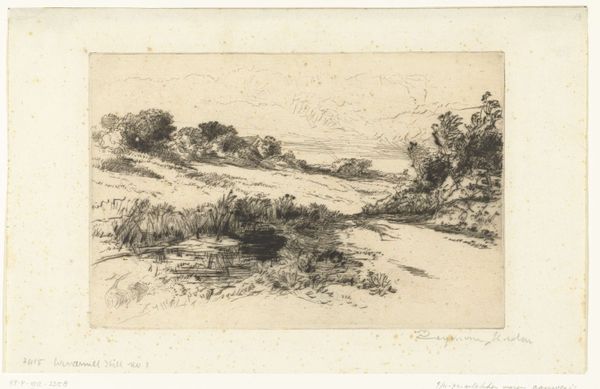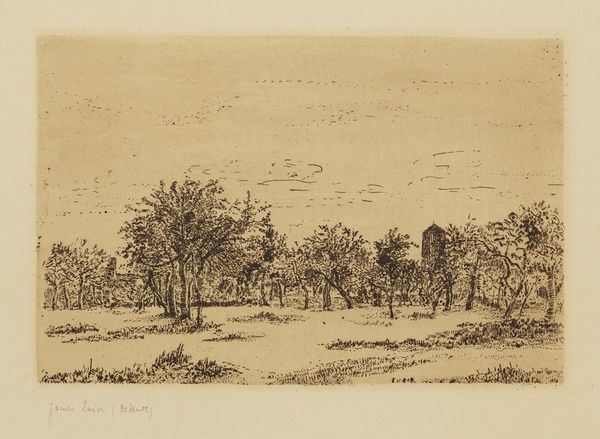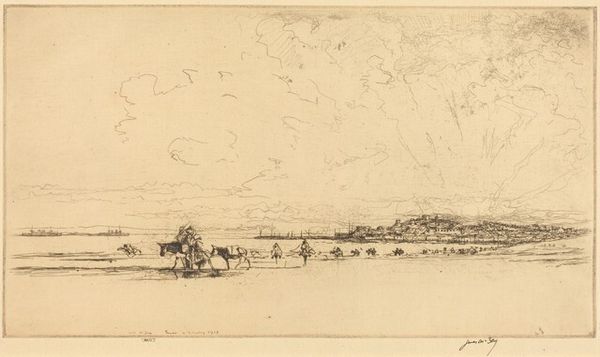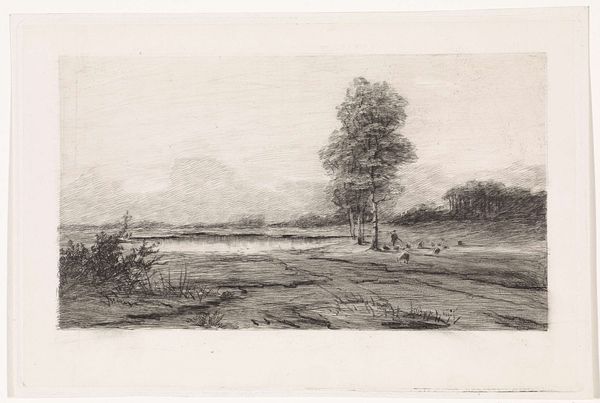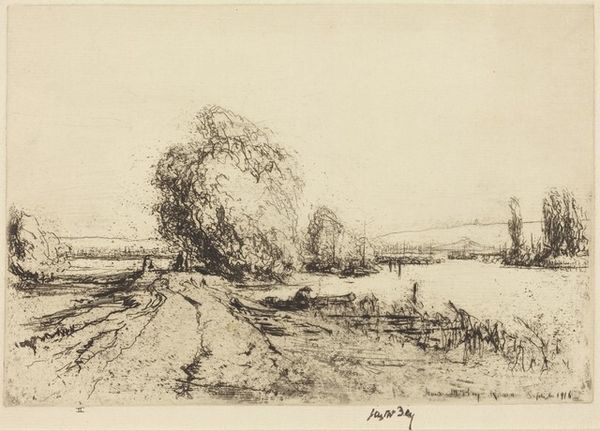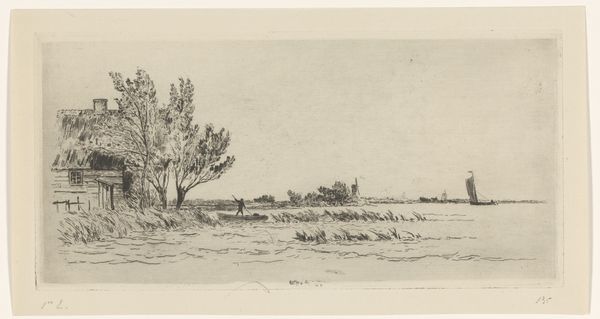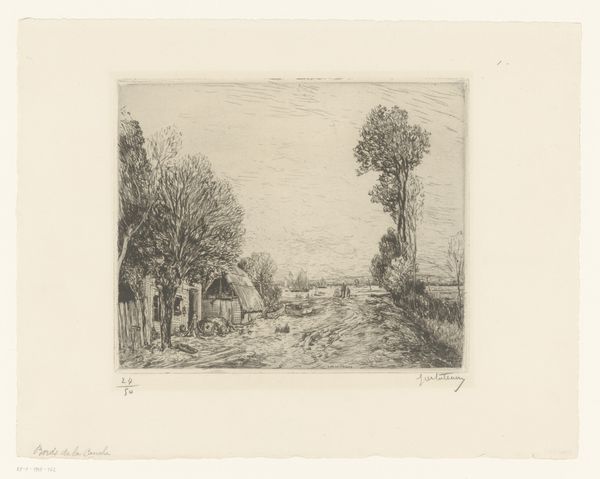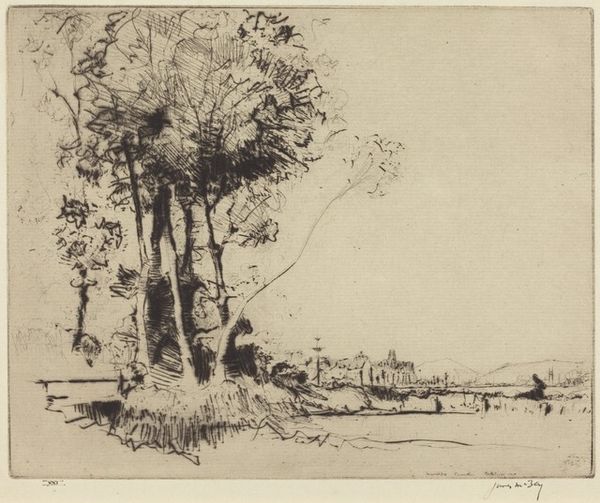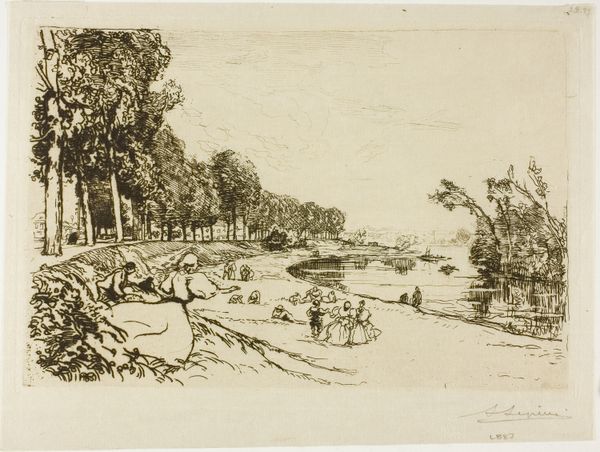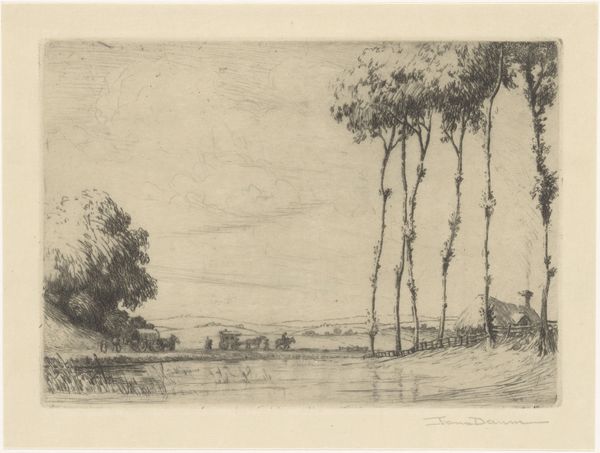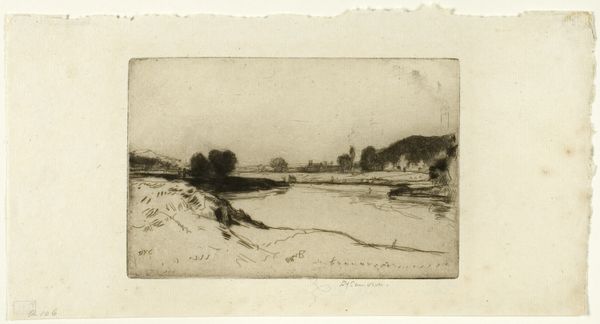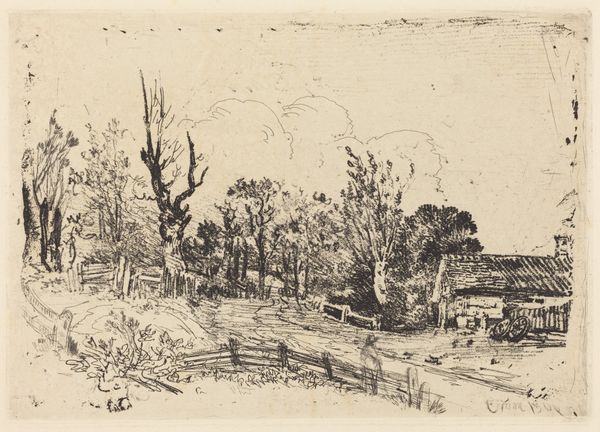
Dimensions: height 254 mm, width 382 mm
Copyright: Rijks Museum: Open Domain
Curator: "Abdij van Sawley," or "Sawley Abbey," a delicate etching rendered in 1873 by Sir Francis Seymour Haden is before us today. Editor: My immediate reaction is one of quiet industry. I see grazing cows, a waterway, buildings—it all speaks to a working landscape. Curator: Haden was not only an artist, but also a surgeon deeply involved with the Etching Revival, lending prestige and respectability to printmaking as a valuable art form, not just reproduction. Editor: Exactly, let's think about that context! This etching surfaces at a pivotal moment, challenging established academic painting while drawing attention to craft. The labour and process become visible, literally etched into the surface. This is happening alongside massive industrial change—what are the social ramifications of an artist embracing the slower, handmade aesthetic in response to a mechanized era? Curator: I would say that his careful manipulation of line, the tonal variations achieved through varying the acid bite—demonstrate considerable skill. Haden controlled the process and ensured an aesthetic outcome where the medium itself became the message. He published instructional manuals and was the founder and first president of the Royal Society of Painter-Etchers. This shows his deep interest in expanding access to the methods and craft behind printmaking. Editor: It feels very connected to the Arts and Crafts movement, doesn’t it? To romanticize a rural scene at that time reflects nostalgia, surely, but can it also be read as a critical assessment of encroaching modernity and its cost on communities? Were traditional modes of production and the communal benefits that accompany the values the artist wanted to conserve? Curator: That is a really important point; Haden’s landscape here becomes imbued with political commentary on labor. Editor: The composition also steers our reading here: he deliberately placed that curving river directly in our path through the frame to highlight how crucial this infrastructure has become to village economy and life, doesn’t it? It underscores my claim for considering the political elements inherent within the material culture surrounding art’s production in addition to its reception. Curator: He truly made an argument for etching's potential to produce high art while underscoring labor’s vital contribution to economic infrastructures and community growth within a changing sociopolitical terrain during his time! Editor: Absolutely. It encourages one to further examine all related cultural-historical implications, even regarding landscape art’s significance within broader society back then as being more politically driven rather than decorative!
Comments
No comments
Be the first to comment and join the conversation on the ultimate creative platform.
